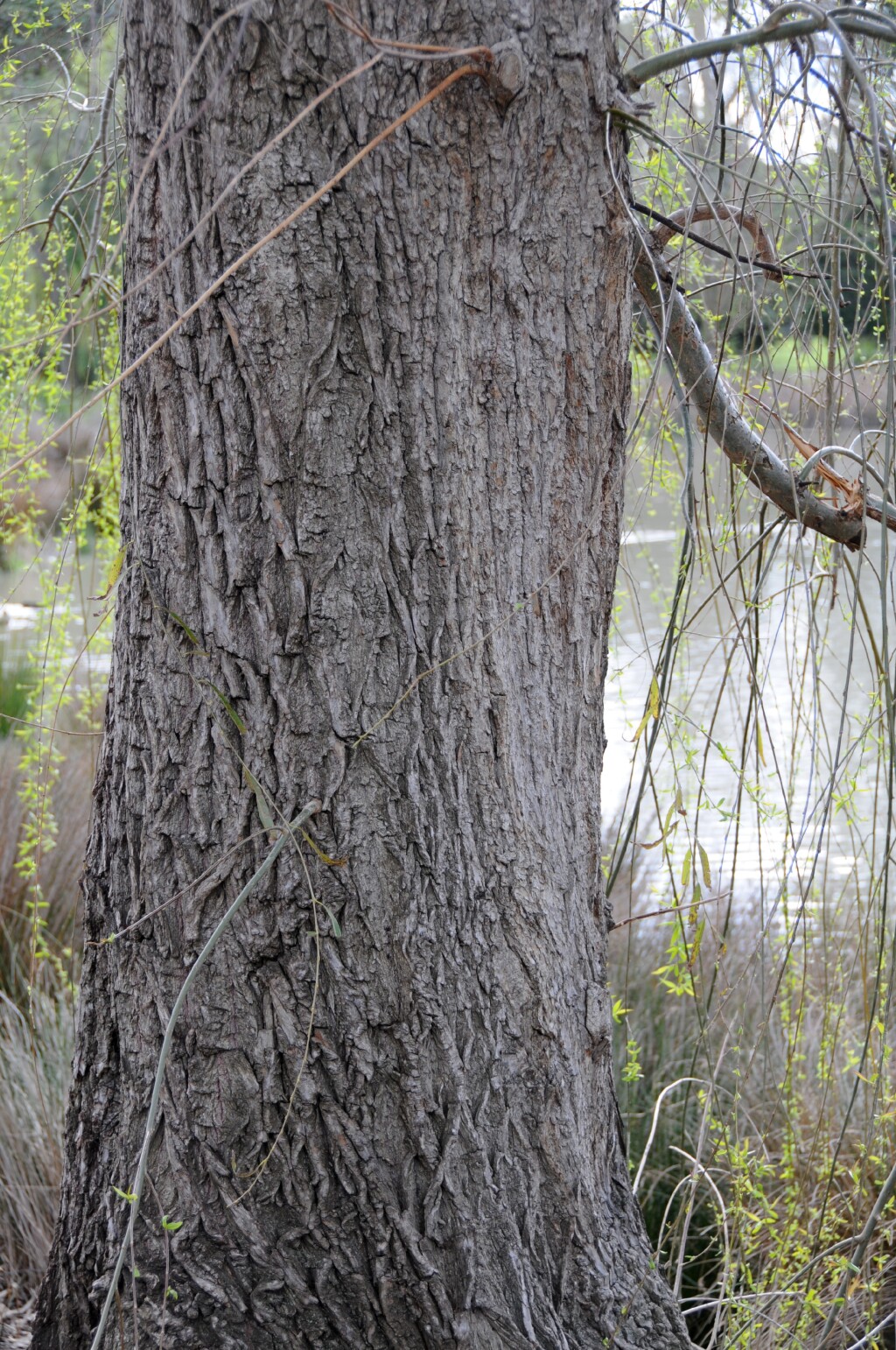Salicaceae
Deciduous (in Australia) trees or shrubs, dioecious (rarely monoecious); winter buds well-developed, protected by 1(–2) bud-scales. Leaves usually alternate, simple; margins often toothed and gland-bearing. Inflorescence a dense catkin, each flower subtended by a scale-like bract (catkin-scale). Perianth absent, but 1 or 2 elongate nectaries, or a single cup-like nectary subtending each flower. Male flowers with 1–many stamens, filaments free or partly fused; anthers bilocular. Female flowers with superior (often shortly stalked) 1-locular ovary; stigmas 2–4, usually bilobed; ovules 4–many, placentation parietal. Fruit a 2–4-valved capsule; seeds with a tuft of hairs attached at base; endosperm absent.
54 genera and about 1200 species, pantropical, temperate to Arctic; 9 genera in Australia. Many members in the traditional sense of the family Salicaceae are widely cultivated.
Now includes Flacourtiaceae Rich. ex DC and Scyphostegiaceae Hutch.
Carr, G.W.; Walsh, N.G. (1996). Salicaceae. In: Walsh, N.G.; Entwisle, T.J., Flora of Victoria Vol. 3, Dicotyledons Winteraceae to Myrtaceae, pp. 385–398. Inkata Press, Melbourne.
 Spinning
Spinning


